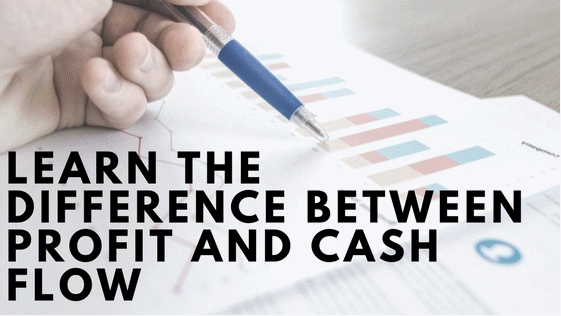Cash flow and profit might be two completely different financial parameters, but they are both equally important for running a successful business. However, small business owners often find themselves facing the situation where they’ve generated a profit and yet have very little available cash. To grow, small businesses have to invest in various assets which makes discrepancies between cash flow and profit a fairly common occurrence. Understanding both the individual traits and the relationship between cash flow and profit will help small business owners figure out exactly where their cash has gone.
-
What is profit?
Profit refers to the surplus left remaining after the total costs have been deducted from the total revenue. Enterprises use profit as a de-facto measure of success and serves as a basis for calculating tax. Reducing liabilities and increasing assets and owner’s equity are the best examples of profit. It is primarily used to pay investors and stakeholders a return on their investment and provide small businesses with the resources it needs to invest in itself in order to grow. Profit can be used a factor indicating comparative performance, however, it’s not as nearly as valuable as return on investment.
-
What is cash flow?
Cash flow is a term used to describe the business’ operating activities represented by the flow of money in and out of the company. In accounting, it represents a difference in the amount of money available at the beginning of a certain period and the amount of money available at the end of said period. Cash flow is referred to as negative when the opening balance is higher than the closing balance and positive when the situation is another way around. Cash flow is generated by selling assets, products and services, reducing various costs while increasing the prices, paying slower while collecting fasters, taking a bank loan and by bringing in equity.
Similar to profit, cash flow is by no means a good measure of performance. High cash flow doesn’t necessarily have to indicate a high profit or any profit at all for that matter the same way large profit isn’t an indication of cash flow. High cash flow is what allows businesses to make new investments such as opening a store in a new location or hiring new employees.
-
Generating cash flow
Cash inflow represents the lifeblood of businesses. Small businesses generate cash inflow from payments made by customers, loan receipts, financial infusions made by outside investors or from interest on investments and savings. For businesses, a positive cash flow is used to pay for all the factors that keep the business running. This includes expenses such raw and stock materials, paying employees, office rent, and various operating investments, etc. Securing a positive cash flow is particularly difficult for small businesses, but fortunately, small businesses have a range of cash flow financing opportunities available at their disposal.
-
Which is more important, cash flow or profit?
Let’s say a business is generating a profit on a monthly basis while all the cash is tied up in accounts receivable and hard assets. This means that the employees cannot be paid. Positive cash flow can only be achieved once all the debts are paid or a business experiences an inflow of revenue. In this case, cash flow is far more important as it allows business owners to keep the company running and still generate a profit.
Besides keeping track of both cash flow and profit, a growing company also has to attend to any operational issues and customer service problems, optimistic corporate spending, issues with the HR department and in some cases, a much-needed leadership change. When it comes to cash flow, the larger picture often requires looking past the company’s expenditures and digging deep into the cash flow statement and any changes related to the balance sheet.
Every business will be faced with lean months during its corporate lifetime. There can be a significant lag between making a sale and getting the payment receipt and it’s important to have just enough cash to keep the business going through those lean months. This is the main reason business owners are keeping a cash reserve big enough to cover the business expenses for at least a year.










